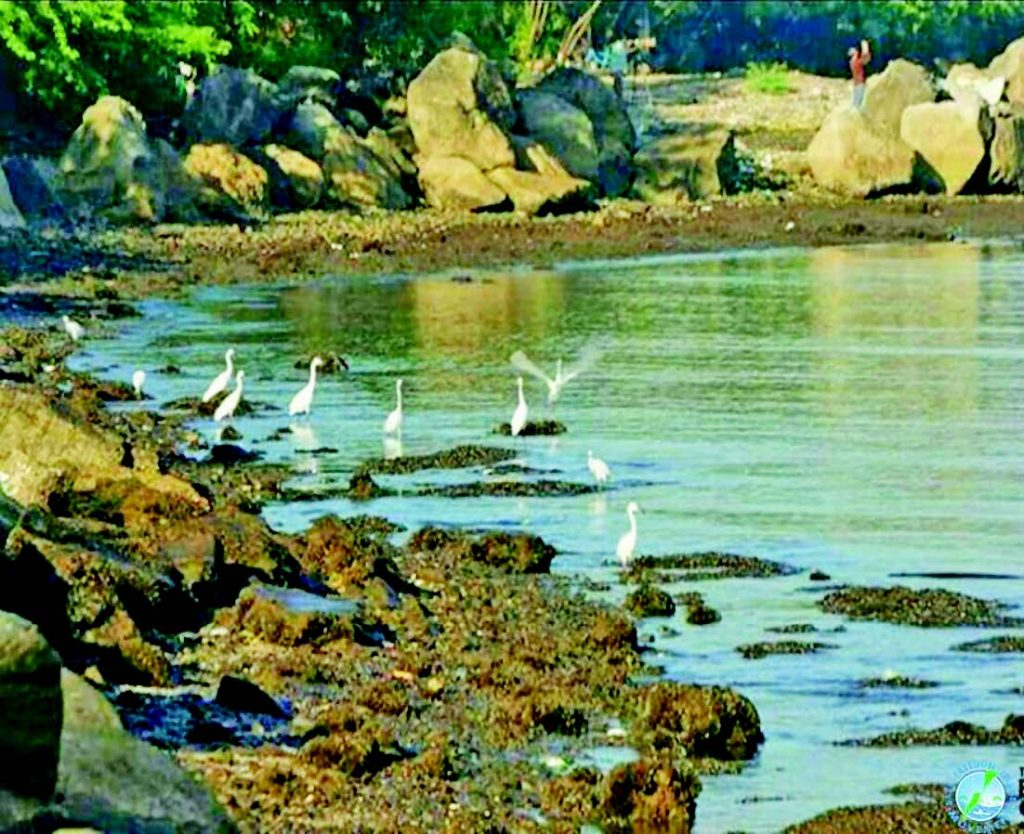More than 200 people met at the Las Pinas-Paranaque Critical Habitat and Ecotourism Area (LPPCHEA), also known as Freedom Island, to take part in a coastal clean-up and nature walk. The day was hosted by the Save Freedom Island Movement (SFIM) and The BIG SHIFT Ph, two organizations that partnered to hold a number of environmental protection activities at Freedom Island.
Community effort
In an interview with Animal Scene, SFIM Campaign Director Anna Velez says that SFIM met with Jeremy Cresencio of The BIG SHIFT Ph earlier this year to plan several activities at the LPPCHEA, the first of which was an ecological and nature walk held at the mangroves forest on September 8, 2018. What followed was the clean- up drive and nature walk on October 13, then another on November 30.

Of the partnership between the two organizations, Velez says that it’s been a big help, “not only for us, but for the betterment of ecological balance and biodiversity of Manila Bay and [the] whole Metro Manila.”
Saving a sinking ship
Volunteers can expect so much more than just clean-up drives at the LPPCHEA. Before every activity, SFIM makes sure to give attendees a short orientation about the history and management of the area, and the current issues faced by those who “manage to live with the nature of freedom island.”
One of these issues is their continuing fight for the rehabilitation and conservation of the LPPCHEA. Velez says that reclaimed lands are usually much higher than the “old soil” of the 22 barangays from Las Pinas and Paranaque, making these communities prone to floods when there is heavy rain. It is SFIM’s goal to educate volunteers not just of the plight of the LPPCHEA environment, but its nearby communities.

“The clean-up drive is a sort of education, it’s kind of [a] ‘Walk the Talk’ attitude,” Velez says. She advises people who consider themselves environmental advocates to take action, “and see to it that others will [be] educated [about] what you do.”
Island-hopping environmentalists
SFIM’s clean-up drives are held in either of two islands: the Big Island (Freedom Island of Paranaque City) and the Long Island (of Las Pinas City). However, most of SFIM’s clean-up drives are often held at the Freedom Island, “because of the strategic location of the main island, where the mangrove forest and nature park [are] located beside the clean-up drive location.”
SFIM’s clean-up drives and nature walks are supposed to be held monthly at the Freedom Island, but public awareness has changed that. Velez explains, “Lately, we have thrice-a-month activities.” She credits this demand to the growing public interest in advocating for the environment.
Animal-related advocacy
SFIM has spent the last eight years caring for the LPPCHEA, and it is their hope that the public begins to recognize what good the fight for environmental wellness can do for the country, including its resident humans and animals. Since SFIM began campaigning for environmental protection at the LPPCHEA, there has been progress. SFIM has recorded a massive growth in marine life due to their clean-up drives and mangrove planting, and the 10,000 families who had to defend their livelihoods in front of the Paranaque Fisherman’s Wharf still have a place to call home due to the strong campaigns to protect their livelihood and urban poor communities.

“The Freedom Island (LPPCHEA), through her mangroves and fruit-bearing tree forests, is also one [of the] “big lungs” that can help the carbon dioxide emissions in Metro Manila,” says Velez.
Critical habitat for animals
The LPPCHEA, established in 2007 through Presidential Proclamation No. 1412, is the first critical habitat declared in the Philippines. Consisting of about 175 hectares of wetland ecosystem, the LPPCHEA was recognized by the Ramsar Convention as a wetland of international importance as it is considered home to restricted-range, congregatory, and threatened bird species.
The SFIM emphasizes that the LPPCHEA hosts approximately 41 migratory bird species, as the area is “an important resting and refuelling stop for migratory birds.” The Department of Environment and Natural Resources-National Capital Region and the Wild Bird Club of the Philippines estimated that as many as 5,000 birds roost and feed in the LPPCHEA per day.
This appeared in Animal Scene magazine’s March 2019 issue.



